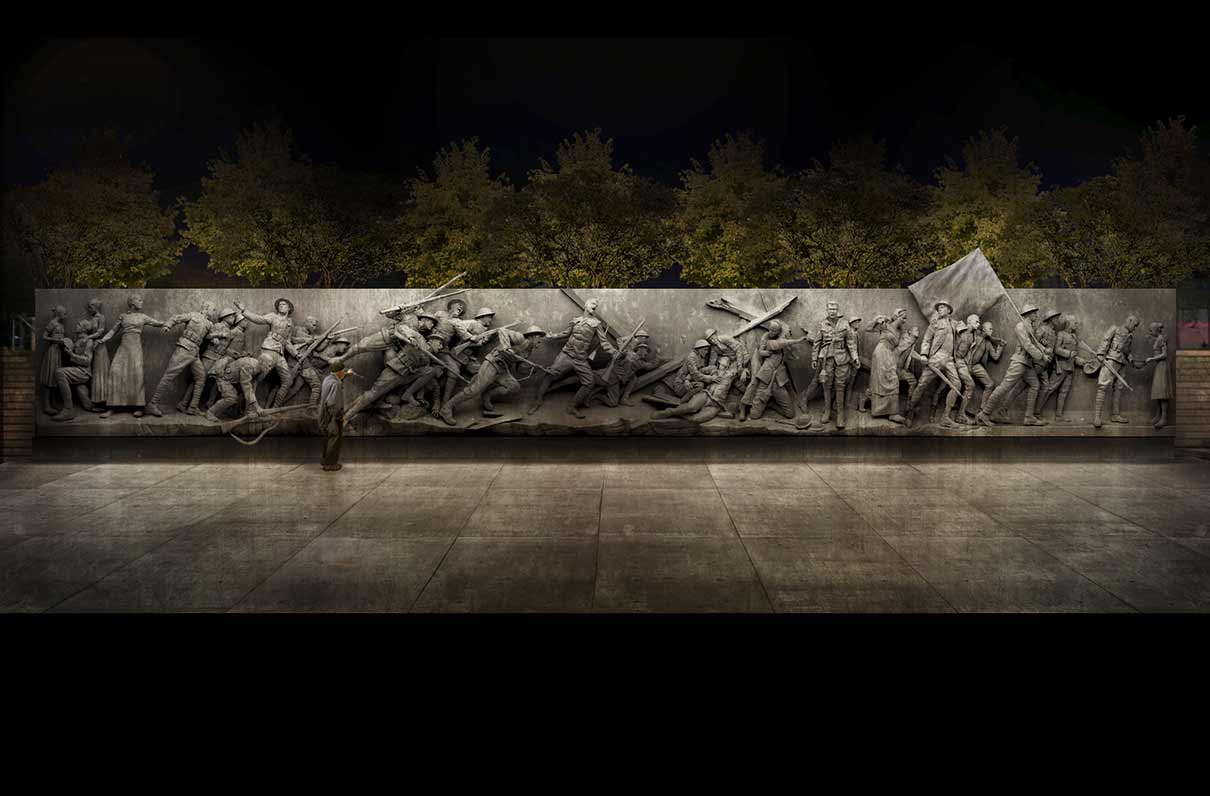By Richard Duke
Pershing Park, located southeast of the White House in Washington, D.C., will be the home of the World War I National Memorial. Edwin Fountain, vice chair of the World War I Centennial Commission, says planning has been tough but well worth it.
“We began by trying to expand the scope of the local memorial,” Fountain says, referring to the District of Columbia War Memorial, a small memorial dedicated on Remembrance Day 1931. “We received hearings. We received legislation - a lot of work [was] done by many people - but we could never get it over the finish line.”
The commission accepted a memorial design that was, in the words of Fountain, “cinematic.” Submitted by sculptor Sabin Howard, the memorial will tell the stories of Americans who fought and sacrificed in the war.
The design, planned at more than seven feet high and spanning the length of one side of Pershing Park, depicts a soldier's journey. The memorial can be seen as its own movie. When approached from left to right, it shows a soldier's domestic life, the battlefields of Europe, the experiences of men and women who served alongside soldiers, and finally, the return home.
“The story I've created [is] a visceral reaction to something that was incredibly tragic and transformed the globe,” Howard says.
The final unveiling is set to take place Veterans Day, Nov. 11, 2021. The commission is still fundraising for the project, noting the memorial will not use any federal money, only private donations.
“We have rightfully commemorated the service of soldiers, Marines, and sailors in Vietnam, Korea, and World War II, but we don't have a true understanding of World War I, and we sorely need that,” Fountain says. “Everything that has happened in the way this country conducts itself militarily can be drawn to how we approached World War I. … It is so very important that we properly remember it.”
